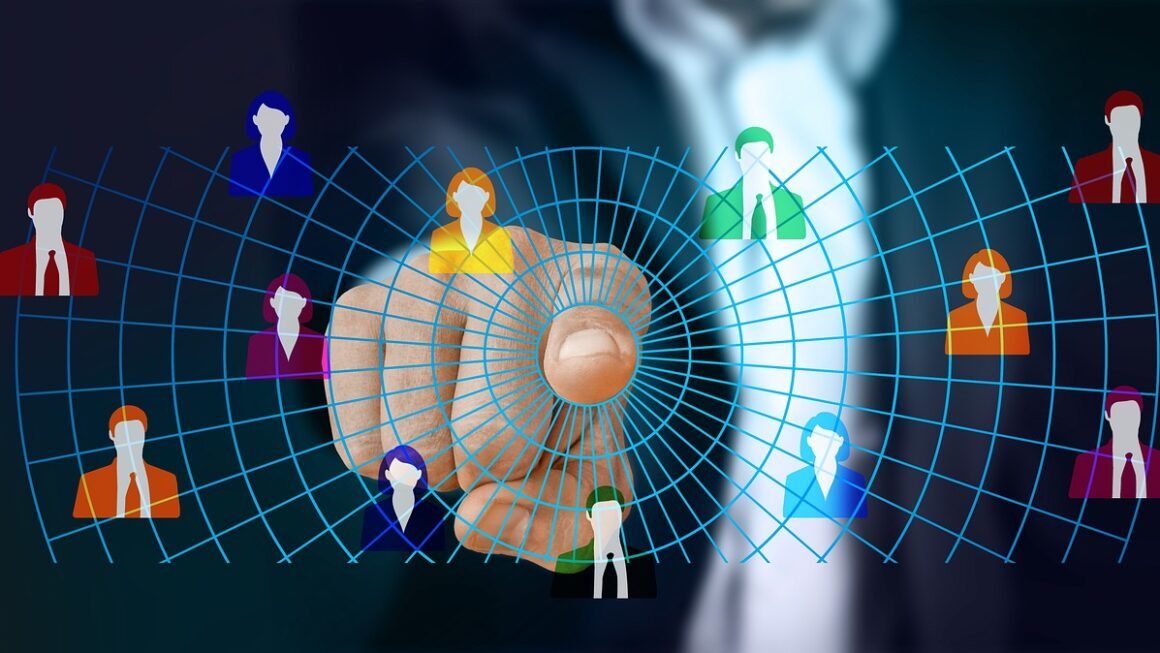Artificial intelligence (AI) is rapidly transforming industries and redefining how we live and work. From automating mundane tasks to powering complex decision-making, AI applications are permeating every aspect of modern life. Understanding the breadth and depth of these applications is crucial for businesses looking to stay competitive and individuals seeking to navigate the future. This blog post will explore various applications of AI across different sectors, providing insights into their benefits, functionalities, and future potential.
AI in Healthcare
AI is revolutionizing healthcare by improving diagnostics, personalizing treatment plans, and streamlining administrative processes. The potential for AI to enhance patient care and reduce costs is immense.
AI-Powered Diagnostics
- Image Recognition: AI algorithms can analyze medical images like X-rays, CT scans, and MRIs with remarkable accuracy, often surpassing human capabilities in detecting subtle anomalies. For example, AI systems can detect early signs of lung cancer from CT scans, enabling timely intervention and improving patient outcomes. Companies like Google’s DeepMind are developing AI tools for medical image analysis, specifically targeting early cancer detection.
- Disease Prediction: AI can analyze patient data, including medical history, genetic information, and lifestyle factors, to predict the likelihood of developing certain diseases. This allows for proactive interventions and preventative care.
- Pathology Assistance: AI assists pathologists in analyzing tissue samples more efficiently and accurately, reducing diagnostic errors and speeding up the diagnostic process.
Personalized Treatment Plans
- Drug Discovery: AI algorithms can accelerate drug discovery by analyzing vast amounts of data to identify potential drug candidates and predict their efficacy. This significantly reduces the time and cost associated with traditional drug development.
- Personalized Medicine: AI can analyze a patient’s unique genetic makeup and medical history to tailor treatment plans specifically to their needs, maximizing effectiveness and minimizing side effects. This approach is particularly promising in oncology, where AI can help identify the most effective treatments for individual cancer patients.
- Virtual Assistants: AI-powered virtual assistants can provide patients with personalized support, reminders for medication, and answers to medical questions, improving adherence to treatment plans and enhancing patient engagement.
Streamlining Operations
- Administrative Automation: AI can automate many administrative tasks, such as appointment scheduling, billing, and insurance claims processing, freeing up healthcare professionals to focus on patient care.
- Predictive Analytics for Resource Allocation: AI can analyze patient flow patterns to predict demand for hospital beds, staff, and other resources, enabling better resource allocation and reducing wait times. This leads to better patient satisfaction and operational efficiency.
AI in Finance
The financial industry has been quick to adopt AI, leveraging its power to improve fraud detection, enhance customer service, and make smarter investment decisions.
Fraud Detection and Prevention
- Anomaly Detection: AI algorithms can analyze transaction data in real-time to identify suspicious patterns and flag potentially fraudulent activities. This is particularly effective in detecting credit card fraud, online scams, and money laundering. According to a report by McKinsey, AI-powered fraud detection systems can reduce false positives by up to 70%.
- Risk Assessment: AI can assess the risk associated with loans and investments by analyzing a wide range of data points, including credit scores, financial history, and market trends. This helps financial institutions make more informed lending decisions and mitigate risk.
Customer Service Enhancement
- Chatbots and Virtual Assistants: AI-powered chatbots can provide customers with instant support, answer frequently asked questions, and resolve simple issues without the need for human intervention. This improves customer satisfaction and reduces the workload of customer service representatives. Many banks are using AI chatbots to handle routine inquiries, allowing human agents to focus on more complex issues.
- Personalized Financial Advice: AI can analyze a customer’s financial situation and goals to provide personalized financial advice, helping them make smarter investment decisions and manage their finances more effectively. Robo-advisors are a prime example of this application.
Algorithmic Trading
- High-Frequency Trading: AI algorithms can execute trades at extremely high speeds, capitalizing on market fluctuations and generating profits. This requires sophisticated algorithms and powerful computing infrastructure.
- Portfolio Management: AI can analyze market data and identify investment opportunities, helping portfolio managers optimize their investment strategies and generate higher returns. AI can also automate portfolio rebalancing based on pre-defined rules and market conditions.
AI in Retail
AI is transforming the retail industry by enhancing the customer experience, optimizing supply chains, and personalizing marketing efforts.
Personalized Shopping Experiences
- Recommendation Engines: AI-powered recommendation engines analyze customer data to suggest products that they are likely to be interested in, increasing sales and improving customer satisfaction. Amazon’s product recommendation system is a classic example of this application.
- Personalized Marketing: AI can analyze customer data to create personalized marketing campaigns, targeting customers with relevant offers and promotions. This improves marketing ROI and increases customer engagement.
- Virtual Try-On: AI allows customers to virtually try on clothing and accessories using augmented reality, enhancing the online shopping experience and reducing the likelihood of returns.
Supply Chain Optimization
- Demand Forecasting: AI can analyze historical sales data, market trends, and external factors to predict future demand for products, enabling retailers to optimize their inventory levels and reduce waste.
- Logistics Optimization: AI can optimize logistics operations by finding the most efficient routes for delivery trucks, reducing transportation costs and improving delivery times. Companies like UPS and FedEx are leveraging AI to optimize their delivery networks.
- Inventory Management: AI can automate inventory management, ensuring that the right products are in stock at the right time and minimizing the risk of stockouts or overstocking.
Enhancing Customer Service
- Chatbots for Customer Support: Retailers are deploying AI-powered chatbots to handle customer inquiries, provide product information, and resolve customer issues.
- Personalized Recommendations: AI helps retailers recommend products based on past purchases and preferences, enhancing customer satisfaction and driving sales.
AI in Manufacturing
AI is transforming the manufacturing industry by automating processes, improving quality control, and enhancing predictive maintenance.
Automated Manufacturing
- Robotics and Automation: AI-powered robots can automate repetitive tasks on the assembly line, increasing efficiency and reducing labor costs. These robots can be programmed to perform a wide range of tasks, from welding and painting to assembling complex components.
- Process Optimization: AI can analyze manufacturing processes to identify bottlenecks and inefficiencies, optimizing them to improve productivity and reduce waste.
- 3D Printing and Additive Manufacturing: AI is used to optimize 3D printing processes, improving the quality and speed of printed parts.
Quality Control and Inspection
- Automated Visual Inspection: AI-powered cameras can inspect products for defects in real-time, identifying flaws that would be difficult or impossible for humans to detect.
- Predictive Quality Control: AI can analyze manufacturing data to predict potential quality issues, allowing manufacturers to take corrective action before defects occur.
Predictive Maintenance
- Equipment Monitoring: AI can monitor the performance of equipment in real-time, identifying potential problems before they lead to breakdowns.
- Predictive Maintenance Scheduling: AI can predict when equipment is likely to fail, allowing manufacturers to schedule maintenance proactively and avoid costly downtime. This minimizes disruptions and extends the lifespan of equipment.
AI in Transportation
AI is revolutionizing the transportation industry with self-driving vehicles, optimized logistics, and smart traffic management systems.
Autonomous Vehicles
- Self-Driving Cars: AI is the core technology behind self-driving cars, enabling them to perceive their environment, navigate roads, and make decisions without human intervention. Companies like Tesla, Waymo, and Uber are investing heavily in autonomous vehicle technology.
- Autonomous Trucks: AI-powered trucks can automate long-haul transportation, improving efficiency and reducing transportation costs.
- Drone Delivery: AI is used to control drones for package delivery, enabling faster and more efficient delivery services.
Logistics and Route Optimization
- Route Planning: AI can optimize routes for delivery vehicles, taking into account traffic conditions, weather patterns, and other factors to minimize travel time and fuel consumption.
- Warehouse Optimization: AI can optimize warehouse operations, improving efficiency and reducing costs.
Traffic Management
- Smart Traffic Lights: AI-powered traffic lights can adjust their timing in real-time based on traffic conditions, reducing congestion and improving traffic flow.
- Predictive Traffic Analysis: AI can analyze traffic data to predict future traffic patterns, enabling transportation agencies to make informed decisions about traffic management.
Conclusion
AI applications are rapidly expanding across all sectors, demonstrating the transformative power of this technology. From healthcare to finance, retail to manufacturing, and transportation to beyond, AI is improving efficiency, enhancing customer experiences, and driving innovation. As AI continues to evolve, it is crucial for businesses and individuals to understand its potential and embrace its adoption to stay competitive and thrive in the future. The possibilities are vast, and the journey has just begun. By understanding and strategically implementing these technologies, we can unlock new levels of productivity, creativity, and progress. The future powered by AI is not just coming; it’s already here.



